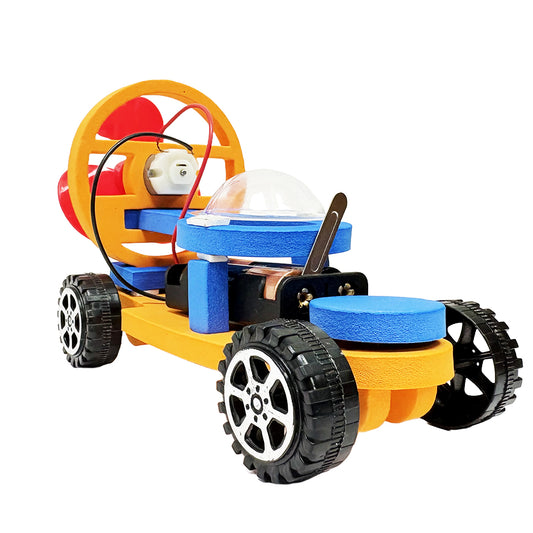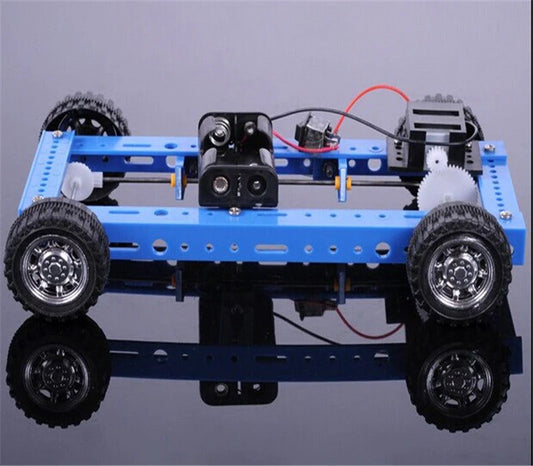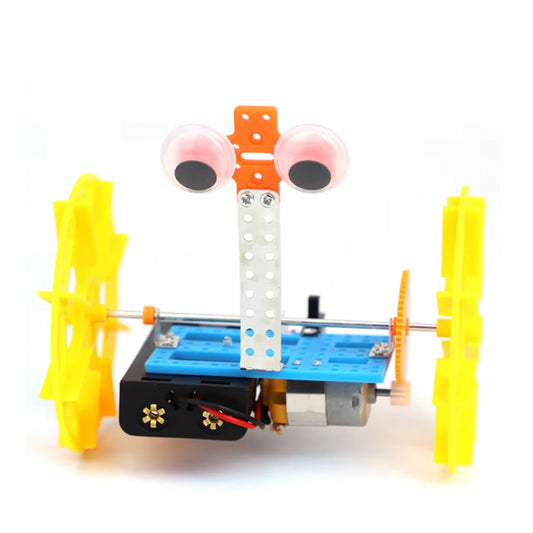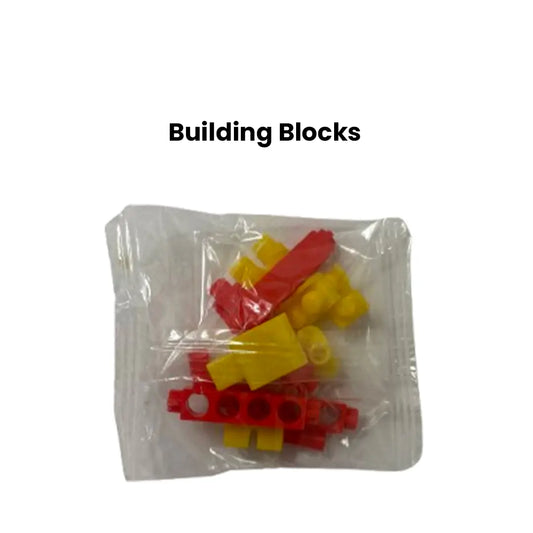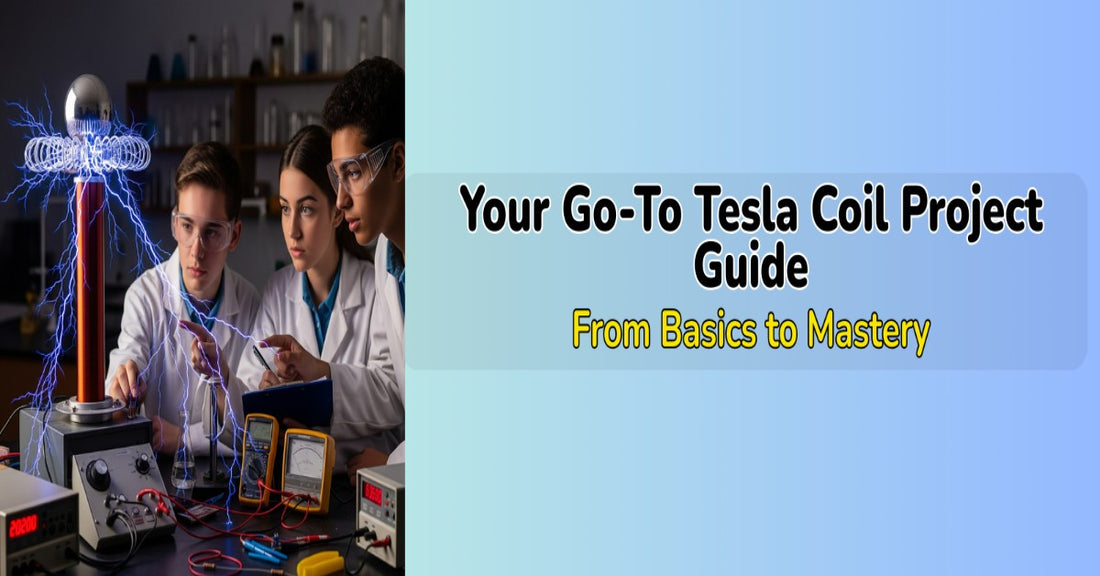
Your Go-To Tesla coil project Guide – From Basics to Mastery
IEM RoboticsTable of Content
- What is a Tesla Coil?
- Components of the Tesla coil circuit
- What is the working principle of the Tesla coil project?
- Here is how to make a Tesla coil at home
- Tesla coil project for starters
- Additional info - making a Tesla coil using Arduino
- Tips while making Tesla coil project
- Conclusion
A Tesla coil project revolves around the use of a device that produces high-voltage electricity and can create sparks similar to lightning through the air. This device, of course, is the Tesla coil.
It is like a special machine that shoots out mini bolts of electricity, without using wires. Moreover, it can light up bulbs or make sparks jump through the air, just like magic! Additionally, people use it for science experiments, cool demonstrations, or even to make music using electricity.
It is a go-to device for performing any science project that requires electricity or sparks!
Dive into this blog further to discuss in detail the Tesla coil’s features and how it enables the performance of multiple projects and experiments.
What is a Tesla Coil?
A Tesla coil is a resonant transformer circuit invented by Nikola Tesla in 1891. It is designed to produce high-voltage, high-frequency alternating current electricity. Moreover, it is essentially a specialized radio-frequency oscillator that utilizes a primary and secondary coil, along with capacitors, to generate high-voltage electricity at low currents.
Additionally, while historically considered for wireless power transmission, it's now primarily used for demonstrations and entertainment, producing impressive electrical arcs and displays.
Here are some more details about the device -
● Resonant Transformer:
A Tesla coil is a type of resonant transformer that is used in a Tesla coil circuit. Thus, this means that it uses resonance to amplify voltage.
● Primary and Secondary Coils:
It consists of two coils, a primary coil connected to a power source (often a high-voltage transformer) and a secondary coil that is loosely coupled to the primary.
● Capacitors and Spark Gap:
Additionally, capacitors are used in conjunction with the coils, and a spark gap acts as a switch to initiate the oscillation.
● High Voltage, Low Current:
Moreover, Tesla coils generate very high voltages, often exceeding a million volts, but at low current levels, which is why they can be used for demonstrations without causing significant harm (though they can still be dangerous).
Components of the Tesla coil circuit
In essence, a Tesla coil acts like a step-up transformer, but instead of using a solid core, it relies on resonance and inductive coupling between two coils to achieve extreme voltage increases at high frequencies. Thus, it contains many components.
Here's a breakdown of the key components and how they work together:
● Power Source:
A Tesla coil project circuit typically starts with a standard AC power source (like a wall outlet).
● Transformer:
These steps increase the voltage from the power source to a significantly higher level, often exceeding 10,000 volts.
● Capacitor:
Moreover, the high-voltage electricity is then sent to a capacitor, which stores the electrical charge.
● Spark Gap:
Additionally, when the voltage across the capacitor reaches a critical point, the electricity jumps across a spark gap, creating a conductive path.
● Primary Coil:
Additionally, the spark gap's discharge sends a high-frequency alternating current through the primary coil.
● Resonance:
Moreover, the primary and secondary coils are designed to resonate at the same frequency, creating a strong inductive coupling between them.
● Secondary Coil:
As the primary coil oscillates, it induces a much higher voltage in the secondary coil due to resonance and inductive coupling.
● Output:
The high-voltage electricity in the secondary coil is then discharged, often in the form of long, visible electrical sparks.
What is the working principle of the Tesla coil project?
A Tesla coil operates by utilizing resonance to generate extremely high voltages and high-frequency alternating current from a lower-voltage source.
Thus, the key principle is electromagnetic induction and resonance between the primary and secondary coils to amplify the voltage.
Here's a more detailed explanation:
● Power Source and Primary Coil:
Firstly, the process begins with a power source (often a high-voltage transformer) connected to the primary coil of the Tesla coil.
● Capacitor and Spark Gap:
Also, the primary coil is connected to a capacitor and a spark gap. Additionally, the capacitor charges up until the voltage is high enough to jump the spark gap.
● Magnetic Field Creation:
Moreover, when the spark gap discharges, the current flows rapidly through the primary coil, creating a strong, rapidly changing magnetic field.
● Induction in the Secondary Coil:
Furthermore, this changing magnetic field induces a voltage in the secondary coil, which is also tuned to a resonant frequency.
● Resonance Amplification:
The primary and secondary coils are tuned to resonate at the same frequency. Additionally, this resonance enables significant voltage amplification in the secondary coil, potentially reaching millions of volts.
● Energy Transfer and Oscillations:
Additionally, the energy oscillates back and forth between the primary and secondary circuits, gradually dissipating due to energy losses.
● Output:
Finally, the high voltage in the secondary coil can create impressive electrical discharges, like streamers or arcs, as the electricity seeks a path to ground.
Here is how to make a Tesla coil at home
Materials Needed
● Paper towel roll or PVC pipe (for the coil tower)
● Insulated copper wire (for secondary coil
● Thick AC wire (for primary coil)
● Tape, glue
● Plastic container or box (body)
● Transistor (MOSFET), resistors, wires
● 24V DC power jack, on/off switch, LED
● Breadboard or PCB board (optional)
Steps to be followed for the Tesla coil project
1. Secondary Coil: Wrap the copper wire tightly and evenly around the pipe. Tape both ends to prevent unwinding.
2. Primary Coil: Additionally, wrap thick AC wire around the base of the secondary coil 3 times. Tape it down.
3. Build the Body: Use a plastic box to hold everything. Moreover, you can decorate it and add compartments for bulbs and branding.
4. Assemble Electronics: Furthermore, use a breadboard (temporary) or PCB board (permanent). Wire the circuit as follows:
○ +24V goes to one side of the primary coil
○ The collector of the transistor goes to the other side of the primary
○ The emitter connects to the base of the secondary coil
5. Connect Components: Additionally, place all electronics inside the body. Secure the switch, LED, and DC input.
6. Test Safely: Finally, plug in the 24V power and turn the switch on. Thus, the LED should light up. Hold a CFL bulb near the coil; if it lights up, success!
You have learnt how to make a mini Tesla coil DIY from your home!
Tesla coil project for starters
For beginners interested in Tesla coils, several kit options and DIY projects are available. Moreover, these projects focus on demonstrating wireless power transfer and high-voltage phenomena. Thus, often uses readily available materials and simple circuits.
The Kit Options include:
● Tesla coil kit for beginners
These kits typically include all necessary components, such as a transistor, a resistor, wires, and a small secondary coil, often with a 9V battery as the power source. Moreover, they are designed for educational purposes and can be assembled with basic soldering skills.
● DIY Science Project Kits:
Additionally, some kits are designed for students and hobbyists, offering a PCB (Printed Circuit Board) and components for a more robust Tesla coil.
● Complete Kits:
Furthermore, more comprehensive kits may include a music input feature and a neon lamp for testing the coil's output.
Some DIY Projects you can make using these kits include -
● Mini Tesla Coil with 9V Battery:
This project involves winding a secondary coil, connecting it to a transistor and a resistor, and powering the circuit with a 9V battery.
● Simple Spark Gap Tesla Coil:
Additionally, this involves building a more powerful Tesla coil, which consists of a spark gap, primary and secondary coils, and a capacitor. Moreover, this project requires more attention to safety precautions due to the higher voltages involved.
● Musical Tesla Coil:
This project involves building a Tesla coil that can play music by modulating its high-voltage output, often utilizing a microcontroller.
Additional info - making a Tesla coil using Arduino
● A Tesla coil project can be built and controlled using an Arduino microcontroller.
● Moreover, the Arduino provides precise control over the timing and frequency of the high-voltage oscillations, allowing for interesting effects like musical tones or adjustable spark length.
● Additionally, the core of the circuit comprises a power MOSFET, a high-voltage transformer, and a primary coil, all of which are controlled by the Arduino.
● Thus, you can create a Tesla coil device using the Arduino Uno microcontroller in this manner.
Tips while making Tesla coil project
When building a Tesla coil, prioritize safety and proper wiring. Moreover, ensure all connections are tight and minimize stray inductance. Additionally, use insulated wire for the secondary coil and be mindful of potential arcing through wood if you plan to use it as a base. Furthermore, double-check all connections before powering up, and be aware of high voltage output.
Here's a more detailed breakdown of tips
● Power Disconnection: Always ensure the main power switch is off before making any connections, and never leave the system unattended while plugged in.
● High Voltage Awareness: Moreover, Tesla coils produce high voltage, so avoid contact with any part of the coil while it's energized.
● Arcing Distance: Additionally, be aware of the potential for long arcs and maintain a safe distance (at least 20 feet) from the coil during operation.
● Component Safety: Furthermore, do not use wood directly under electrical components, as it can be an insulator at high voltages and may lead to arcing and potential fire.
● GFCI: Consider using a Ground Fault Circuit Interrupter (GFCI) box to protect against electrical shock.
Conclusion
A Tesla coil project can be a fascinating and educational experience, demonstrating principles of electricity, magnetism, and resonance
Moreover, Tesla coils are a great way to learn about resonant transformers, high-frequency AC circuits, and wireless power transfer.
Additionally, the visible arcs and glowing lights produced by a Tesla coil make it a visually impressive and engaging project.
Furthermore, Tesla coils can be used to demonstrate concepts such as wireless power transmission, electric fields, and the behavior of plasma.
However, it's important to be aware of the potential hazards and plan accordingly. Moreover, Tesla coils operate at very high voltages, which can be dangerous if not handled properly. Also, for a school project, consider building a smaller, lower-powered Tesla coil to minimize potential hazards.
In conclusion, a project made from a Tesla coil can be a rewarding and educational experience, but it's crucial to approach it with a focus on safety and proper planning.
Go ahead and try your very own Tesla coil project today!

